
Types of Cocktail Shaker and How To Use Them
Shaking a cocktail is probably the most iconic and the most essential, bartending technique. Learn more about the different styles of cocktail shakers and some tips on how to use a cocktail shaker effectively.
Estimated reading time: 5 minutes
Cocktail Shakers

Cocktail Shakers
Step into nearly any cocktail bar in the world and you’ll likely hear the rhythmic rattling of ice on tin. Shaking a cocktail has long been a quintessential and iconic technique in the bartender’s repertoire, not just for blending ingredients but also for adding flair and theatre to the drink-making process. Its history is as fascinating as the cocktails it helps create, and its various styles continue to intrigue both professional bartenders and amateur enthusiasts alike. Join us as we take a journey through the past, explore popular styles, and look at some of the key points of using a shaker effectively.
At its core, a cocktail shaker is simply a container in which to combine ingredients and ice. They can then be agitated to achieve the four keys to any great shaken drink – mixing, chilling, dilution and aeration. (Morgenthaler, 2014) The journey of how what we now know as a cocktail shaker came to be however, is one spanning centuries and continents.
Although there is evidence of shaken drinks going back hundreds and possibly even thousands of years (Tomky, 2016), it wasn’t until the mid-19th century and the standardisation of bartending techniques and recipes that came with this era, that the cocktail shaker really gained popularity, with leading figures of the day such as Jerry Thomas proclaiming them as indispensable tools. (Wondrich, 2007)
The First Shakers
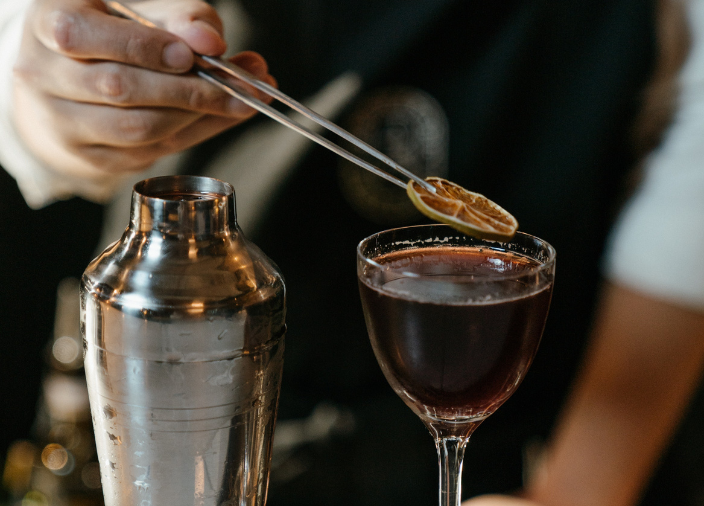
The First Shakers
Prior to its invention, cocktails were often mixed using bar spoons or other makeshift tools, leading to uneven blending and dilution. The first shakers were simple sets of metal cups (often made from tin but sometimes silver) but as the 19th century progressed, numerous inventors and bartenders sought to improve upon the cocktail shaker's design.
Three styles emerged as enduring favorites: the Boston shaker, the French (or Parisian) shaker, and the cobbler shaker. Each of these styles found its niche, reflecting the different preferences of American and European bartenders. These styles have remained very much unchanged with the biggest shift being the change to stainless steel as a preferred material in the 1920’s.
Read on as we explore these three styles and uncover some key tips for using them effectively.
Boston Shaker

Boston Shaker
The Boston shaker is a two-piece set consisting of a large metal tin and a mixing glass. Bartenders place the mixing glass upside down inside the metal tin to form a seal while shaking. It is normally used with a separate strainer and its simple design and ease of use have made it a favorite in professional bars worldwide. An additional benefit is that the glass half doubles as a mixing glass.
Tin-on-Tin
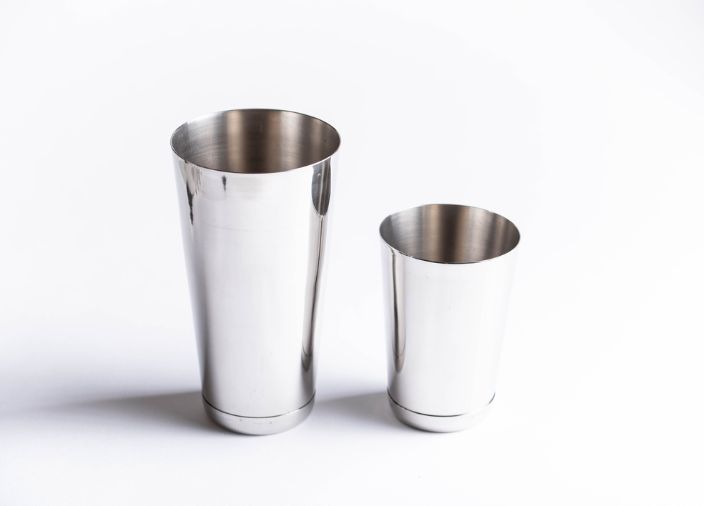
Tin-on-Tin
A variation on the Boston, the Tin-on-Tin replaces the glass half with a smaller, metal tin (sometimes called a “cheater tin”). These have the benefit of being less prone to breakage than the Boston glass as well as having less thermal mass – meaning it takes less energy to chill the drink. (Arnold, 2014). They also tend to nest deeper, forming a more secure seal and making one-handed shaking easier.
Cobbler Shaker
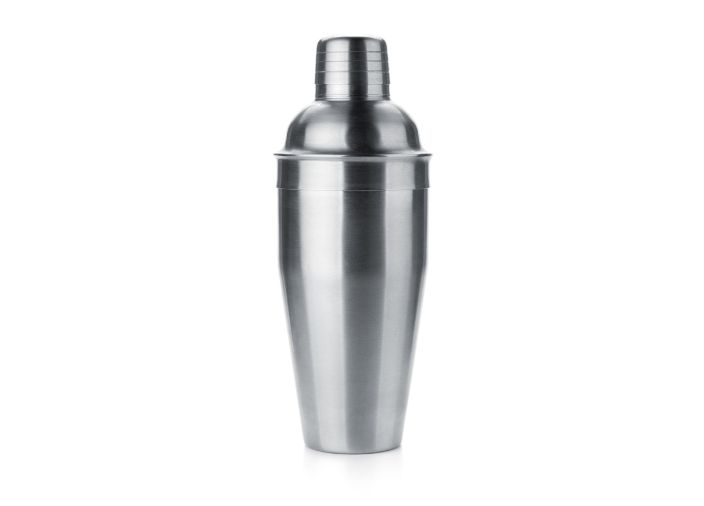
Cobbler Shaker
The cobbler shaker is the classic three-piece shaker that most people envision when thinking of cocktail shakers. It features a metal container, a lid with built-in strainer, and a cap. This shaker is commonly used in home bars due to its user-friendly design. Cheaper versions often suffer from poor design and materials, resulting in a shaker that is hard to open after shaking. Premium versions do exist though and when used with skill, they can be highly effective tools.
Parisian Shaker
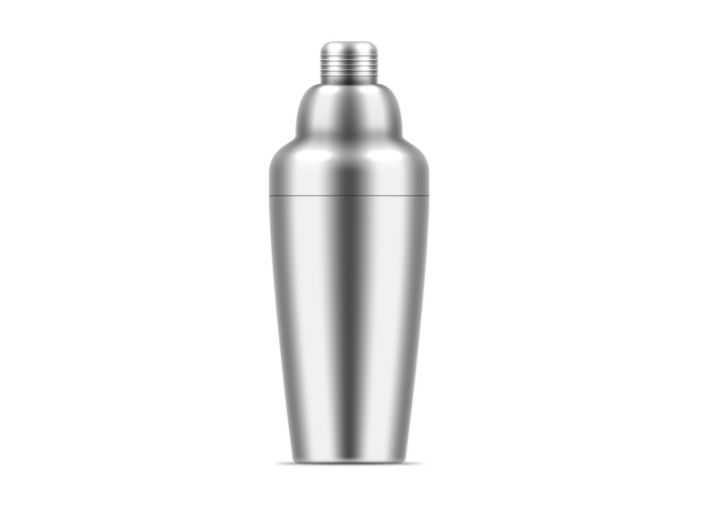
Parisian Shaker
Somewhere between the Tin-on-Tin and the Cobbler, the Parisian shaker is a two-piece shaker consisting of two metal tins that fit into each other. Its sleek design and smooth contours make it a more aesthetically pleasing and refined alternative to the tin-on-tin Boston. Like the Boston, the Parisian is normally used with a separate strainer.
Tips for Use and Maintenance
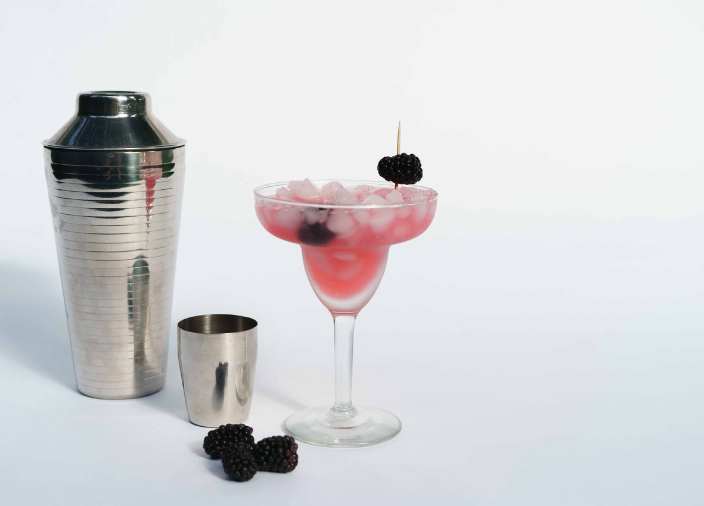
Tips for Use and Maintenance
The simplicity of the shaker means that they are quite easy to use however there are still several best-practice tips for a bar professional to ensure great results.
Stainless Steel tins are quite durable and don’t take much maintenance. However, always ensure they are cleaned well after use, especially after shaking eggs, cream or other ingredients that leave more stubborn residue.
Never stack wet tins. A vacuum can form which has led to many permanently stuck sets! Store upside down to let water drain out and allow to air-dry.
Always shake with the top of your shaker facing up and away from your guest. A slight leak or excess liquid could wet a guest if your shake is directed towards them.
Never bang a tightly sealed shaker against a counter to loosen it. A light tap with the heel of your hand at the point just off from where the glass and tin meet should be all that’s required to loosen most Boston shakers.
Key Takeaways
Mastering shakers is an essential skill for all bartenders.
Before their invention, bar tools like spoons were used leading to uneven mixing and dilution.
There are three main types of shakers today: the Boston shaker, the French (or Parisian) shaker, and the cobbler shaker.
The Boston Shaker is a two-piece set, one half a large metal tin and the other half a mixing glass.
The cobbler shaker is most commonly used in home bars. It’s a three-piece shaker featuring a metal container, a lid with built-in strainer, and a cap.
The French (or Parisian) shaker is a sleek, two-piece set made with two tins that fit inside each other.
Take good care of your shakers as they are an essential tool of the trade.
Receive regular industry news, recipes and inspiration direct to your inbox for free when you sign up to the Diageo Bar Academy newsletter.
Related Content
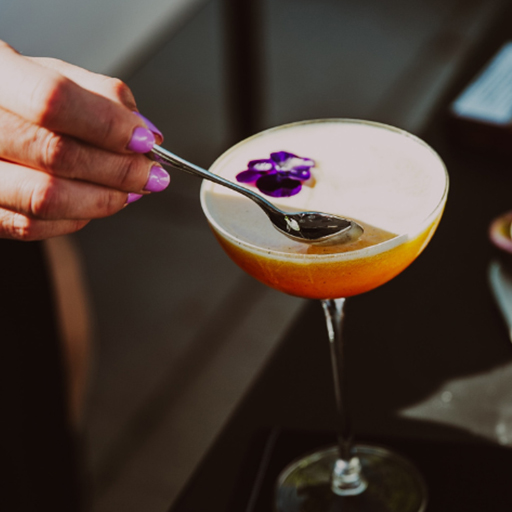
The Bar Spoon
The barspoon is a versatile tool that has come to represent the craft and skill of bartending. Learn more about the range of uses and styles to suit personal of this essential bar tool.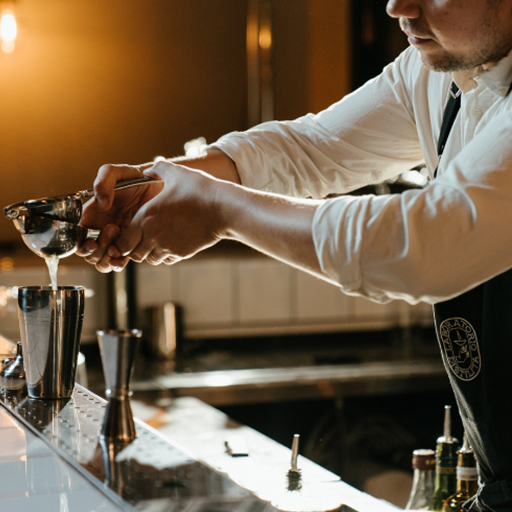
All About the Jigger
Explore the jigger's history and usage to understand more about its contribution to the art of cocktails.
Cocktail Strainers
Learn more about the history of the tool and best practices for using cocktail strainers when making drinks.
Mixing Glasses
A mixing glass is a key piece of equipment for any stirred drink, especially classic such as a Manhattan or a Martini. Discover more about the history of this essential tool, its various forms, and the nuances that define its use.
The Essential Guide to Speed Pourers
The speed pourer ensures a drink is prepared with speed and accuracy. Learn more about this important gadget and the role it plays in the hospitality industry.
